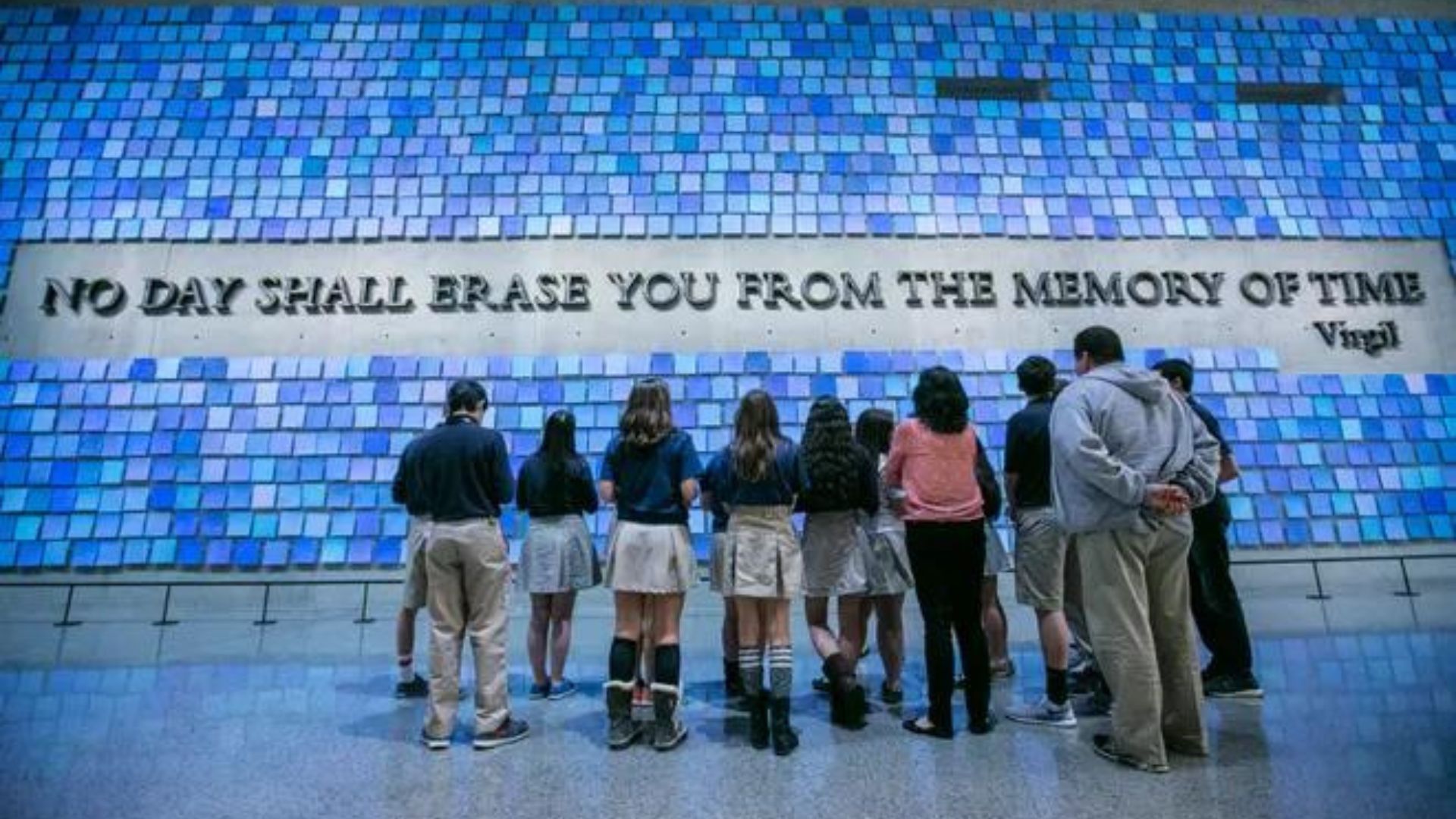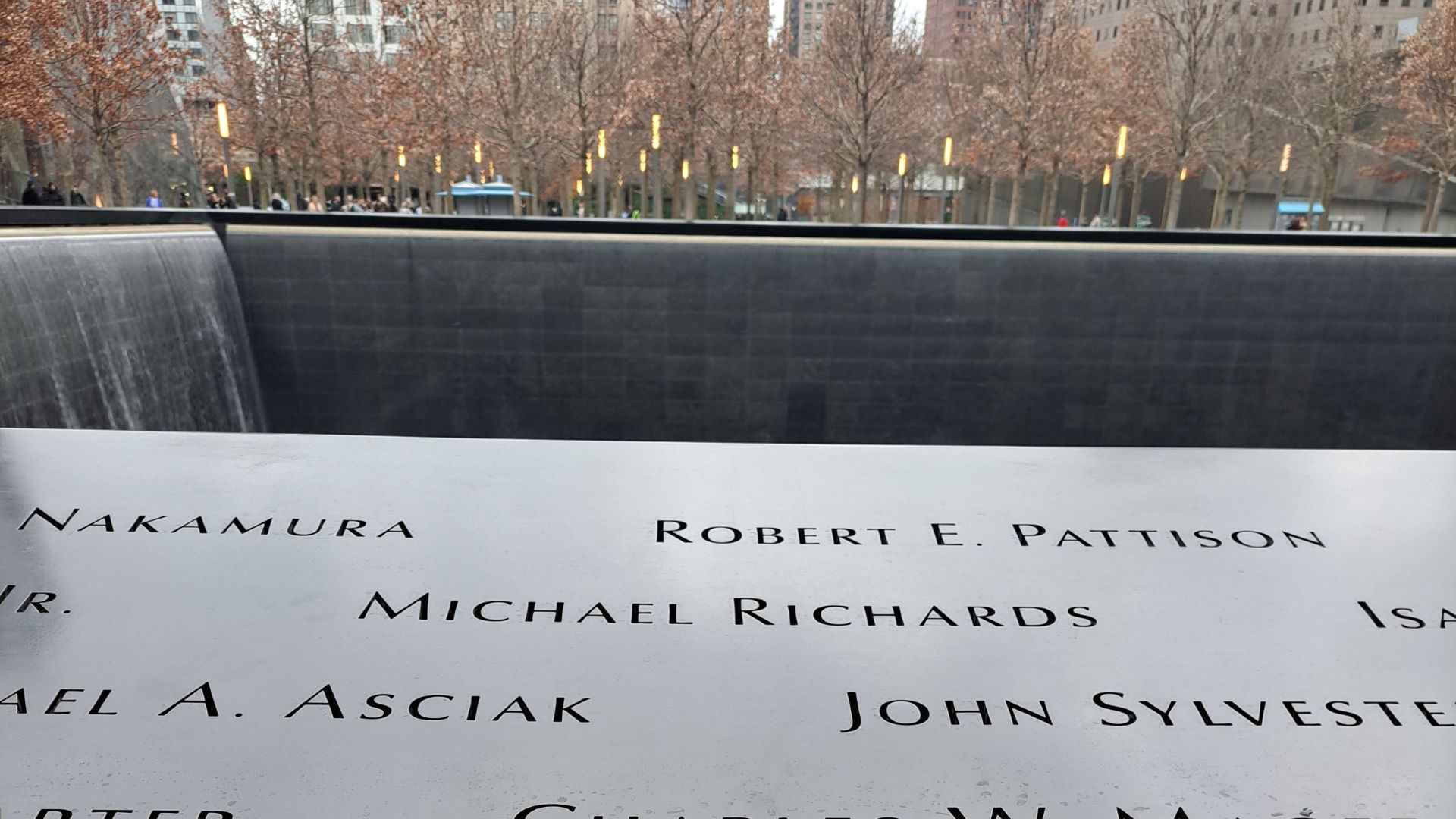Rescue & Recovery: In Their Own Voices With Rosemarie O'Keefe
Rescue & Recovery: In Their Own Voices with Rosemarie O'Keefe
- December 11, 2023
On September 11, 2001, Rosemarie O’Keefe was the Commissioner of the Mayor’s Community Assistance Unit, which worked directly with communities throughout New York City. In her 2007 oral history, she recounts the creation of the Family Assistance Center immediately after the attacks, providing a massive support system for victims' families. She also recalls the Christmas shopping experience she created for those families in an effort to give them as normal a holiday as possible given the tragedy. Rosemarie was a dedicated public servant who spent decades giving back to her community. After a long battle with cancer, she died at 65 on July 17, 2009. This December edition of our "In Their Own Voices" series features excerpts from her oral history.

Teddy bear from the Family Assistance Center at Pier 94, donated by Marilyn Harkin, who volunteered there.
Where were you on the morning of 9/11?
I was on my way to Manhattan. I was on the Brooklyn Bridge when I got a call from Mayor Giuliani’s special scheduler. She asked where I was and informed me the Mayor wanted me to go to the World Trade Center. They thought a plane had gone into the building and he wanted me there to help answer questions.
As we drove up, we realized something else was happening, but we didn’t know what. I’ll never forget the things people just dropped in their moments of running and confusion — coffee cups, pocketbooks, shoes, their morning breakfast. I remember looking up at the building and being confused at what appeared to be carbon paper floating down, because I didn’t think they used carbon paper anymore. Well, it wasn’t. It was from the men who were leaping out of the building, and these were their jackets.
We weren’t emergency management, but knew we had to help. Some of my staff went to the river to try and get people out of Manhattan. We knew ferries and private boats were coming to help us. We then put on jackets that said, ‘Mayor’s Office’ on the back. We thought it would help people to identify us — and they did. People just swarmed us looking for answers.
I was making my way out of lower Manhattan, walking over the Manhattan Bridge, when the towers came down. Once in Brooklyn, we made our way to a school where we tried cleaning ourselves up. The Deputy Mayor called and said, “He wants you to come back. He needs you and the families need you.” I quickly showered and went back. The Mayor asked us to set up a family center. I stayed for the next three months.
What role did you play in the aftermath of the attacks?
We set up the Family Assistance Center at Pier 94. It was 130,00 square feet. We provided every form of assistance imaginable, including booths for about 60 different units, agencies, and companies — including companies who had offices in the World Trade Center, police departments, immigration services, human resources, foreign governments, and the fire department. Also set up was DNA testing in a private area. When a family member came into the building, they were given an escort and taken from booth to booth.
As the weeks went on, and as we approached the holidays, the families had asked that we stay open for Christmas. They wanted something, not a festive holiday, but a holiday. We turned the pier into a shopping mall. We made boutiques out of every little space we could. We called every company imaginable, and they came. We must have had at least 50 booths with dolls, trucks, toy characters, gym equipment, handmade quilts, and more. We wanted people to shop without the agony of going to a public store. There were bags and bags of stuff. Kids were laughing. We had babysitting facilities so parents could leave their children while they were shopping. For just a moment, they had some normalcy around the holidays.
Can you share some memories that stand out from your time running the Family Assistance Center?
One of the responsibilities of the Family Assistance Center was taking family members down to the World Trade Center site by ferry boat. Most people came with extended family, but I remember one woman who came alone. I had a therapy dog and his owner go on the ferry with them. The dog instinctively knew she was alone. He went over and put his head on her lap the entire trip. When they got off the boat, the dog walked with her to the site where she put flowers down.
There were also days when some family members just couldn’t go down to the site. It was too painful for them. I remember one gentleman who lost his son on 9/11. He said, “I can’t get on the boat. I’m not ready.” I told him that I knew he’d be ready soon, and when he was, he should find me, and I would go with him. That evening, I saw him running across 12th Avenue, and he told me he was finally ready to go, and that he could go alone. When he got back, he left in my hand a crumbled note. That note said it all. It said, “You were right.”
Why is it important that we share stories like yours with the next generation, which has no lived memory of September 11th?
These are remarkable stories that need to be shared, that need to be remembered. It was a moment in time when we all stood there and said, "This is the right thing to do." New York became gentler. We hoped that it would last forever.
Anything else you’d like to add?
During those three months at the Family Assistance Center, I didn’t have time to cry. However, when I relay these stories now, I sob at the thought of them. What we accomplished and what we were able to do for grieving families and for the city, gives me pause. During that time, I learned everything that needed to be done as it was happening. I would love to be able to share that knowledge with others should it be required in the future so others can be prepared. Perhaps me sharing my story now will do just that.
Compiled by Caitlyn Best, Government and Community Affairs Coordinator
Previous Post
USA Today Op-Ed by Elizabeth L. Hillman

Read the text of a November 27 USA Today opinion piece by President & CEO Elizabeth L. Hillman addressing the resurfacing of bin Laden's 2002 treatise 'Letter to America.'
Next Post
Visit to Bronx Museum Inspires Revisit of Michael Richards Story

A visit to the Bronx Museum helps one of our interpretive guides discover the powerful story of artist Michael Richards, killed on 9/11 while working in a studio on the 92nd floor of the North Tower.